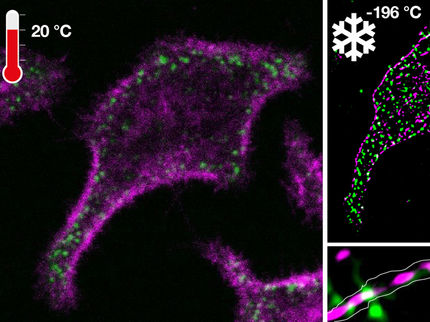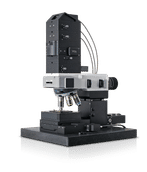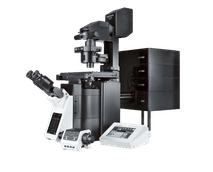Leica SR GSD 3D Super-Resolution Microscope Voted Among Top 10 Innovations 2013 for Laboratories and Research
The Scientist Magazine Chooses Super-Resolution Microscope from Leica Microsystems as one of the Year’s Best Innovations for the Second Time
The Leica SR GSD 3D super-resolution microscope has been voted third among the Top 10 Innovations 2013 by the prestigious magazine The Scientist. The panel of judges, consisting of representatives from science, business, and the non-profit sector, selected the super-resolution system for 3D localization microscopy from more than 80 entries as one of the most innovative products with the potential to revolutionize life sciences.
The Leica SR GSD 3D enables scientists to visualize and study cellular structures and processes down to the molecular level. It is based on the GSDIM method (Ground State Depletion Microscopy followed by Individual Molecule Return), also known as dSTORM (direct Stochastic Optical Reconstruction Microscopy). Scientists can now study sub-cellular structures and protein-protein interactions, for example the nuclear pore complex, in both 2D and 3D – at highest resolution achievable to date in commercial widefield fluorescence microscopy. The Leica SR GSD 3D can achieve a resolution of 20 nanometers in the xy plane and 50 nanometers in the z axis. This capability provides new insights into biological systems and their functions, aiding in our understanding of disease processes and contributing to the development of new therapies.
“This award highlights the impressive quality and performance of our high-resolution system and its importance for biomedical research – and it is a great reward for the whole team,” comments Sebastian Tille, Director of Widefield Imaging, Life Science Division at Leica Microsystems. “We are all the more delighted with this award as the predecessor system had already won several awards for its innovation.”
Launched in 2011, the predecessor Leica SR GSD was voted a Top 10 Innovation that year by The Scientist as well as the 2012 R&D100 Award and selected one of three 2012 R&D100 Editor’s Choice Awards from R&D magazine. It was also awarded a 2012 Innovations Award by Microscopy Today, the magazine of the Microscopy Society of America.
Other news from the department research and development
These products might interest you
Most read news
More news from our other portals
See the theme worlds for related content
Topic world Fluorescence microscopy
Fluorescence microscopy has revolutionized life sciences, biotechnology and pharmaceuticals. With its ability to visualize specific molecules and structures in cells and tissues through fluorescent markers, it offers unique insights at the molecular and cellular level. With its high sensitivity and resolution, fluorescence microscopy facilitates the understanding of complex biological processes and drives innovation in therapy and diagnostics.

Topic world Fluorescence microscopy
Fluorescence microscopy has revolutionized life sciences, biotechnology and pharmaceuticals. With its ability to visualize specific molecules and structures in cells and tissues through fluorescent markers, it offers unique insights at the molecular and cellular level. With its high sensitivity and resolution, fluorescence microscopy facilitates the understanding of complex biological processes and drives innovation in therapy and diagnostics.

























































